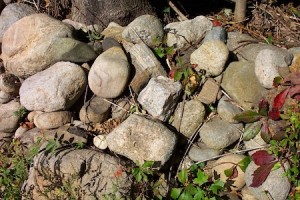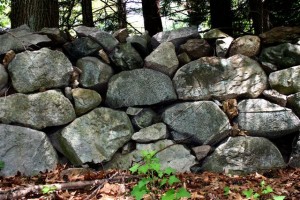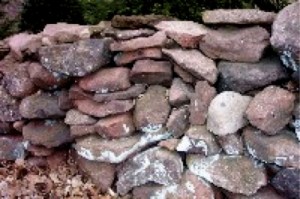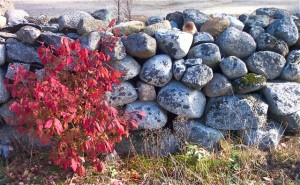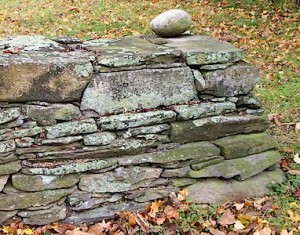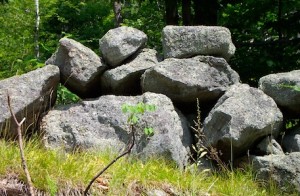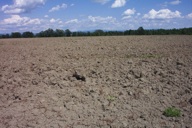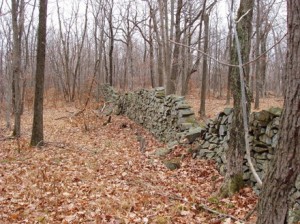
The visible difference between walls above and below reflect different combinations of bedrock lithology, glacial action, and cultural handling. Though the contrast is extreme, it illustrates two main points: (1) that stone walls are highly variable, and (2) that the differences can be readily explained.
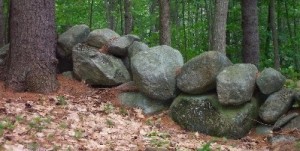
To help differentiate and map stone walls in New England, I organize them into what I call provinces (for lack of a better term). Provinces are areas, generally at the town to county-scale, where the fieldstone walls are similar in form, due to the combination of three critical factors: the bedrock type and the glacial handling, which controls the size, shape, and mix of the stones, and the land-use history, which controls the concentration, height, and quality of the resulting walls. I define eleven provinces
SPECIAL PROVINCES
1 – Island: Located on the massive sandy moraines of southern new England (Nantucket, Cape Cod, Martha’s Vineyard, Elizabeth Islands, Block Island, Fisher’s Island, Long Island, Staten Island, etc.). Walls are built of stone carried south from the mainland and dropped in glacial sand above softer rock of the coastal plain.
2 – Imported: Coincide with mapped areas of glaciolacustrine “fines,” which means that any stone wall there was built of stone hauled in by humans.
PROVINCES DEFINED BY LITHOLOGY AND GLACIAL HANDLING
Granite and Gneiss Lithology
3 – Granite Block: with Shallow Bedrock glacial action.
4 – Granite Mix: with Lodgment Till glacial action.
5 – Granite Boulder: with Sand & Gravel glacial action.
Schist and Quartzite Lithology
6 – Fieldstone Slab: with Shallow Bedrock glacial action.
7 – Fieldstone Mix: with Lodgment Till glacial action.
8 – Fieldstone Boulder: with Sand & Gravel glacial action.
Soft Rock Lithology (Marble, Brownstone, Low-grade metamorphic)
9 – Softrock Highland: with Shallow Bedrock glacial action.
10 – Softrock Hillside: with Lodgment Till glacial action.
11 – Softrock Lowland: with Sand & Gravel glacial action.
CULTURAL STAGE
For each of the eleven provinces above, and quoting page 119 of Exploring Stone Walls, “I did not further subdivide the provinces by cultural stage. Rather, one can just expect walls to be more massive, better built, and more elaborate as cultural stages rise from pioneering, to established farm, to forest and city, and then to reclamation.”
FINDING YOUR PROVINCE
To determine which province of stone wall is in your area of interest, locate that place on the location grid, which maps New England in one-degree latitude-longitude rectangles. To help you get located, I provide reference points, generally cities or popular tourist places. Having found your geographic point, link to each of the three main variables listed above. This process is explained on page 118-125 of Exploring Stone Walls.
GALLERY OF IMAGES
Below are some examples of walls from different provinces.
